How to Installing Debian 11.2.0
Introduction
Debian’s newest stable version, Debian 11.2.0, often known as Buster, was just published. Many changes to Debian’s software packages are included in the current version, as well as five years of support for its users.
Prerequisites
- 10 GB Free Hard disk space
- Bootable USB/ DVD
- Internet connectivity (Optional)
Download Debian 11.2.0-amd64-netinst ISO file
Download Debian 11.2.0-amd64-netinst ISO file from the link below
https://cdimage.debian.org/debian-cd/current/amd64/iso-cd/

Start the computer from a USB drive / CD-DVD ROM
- Create a bootable USB after downloading the ISO image.
- Select the medium on which the ISO file is saved to start the system.
- The system should show Debian’s Main Menu, with numerous options for installation. We’ll use the Graphical Debian Installer in this tutorial.
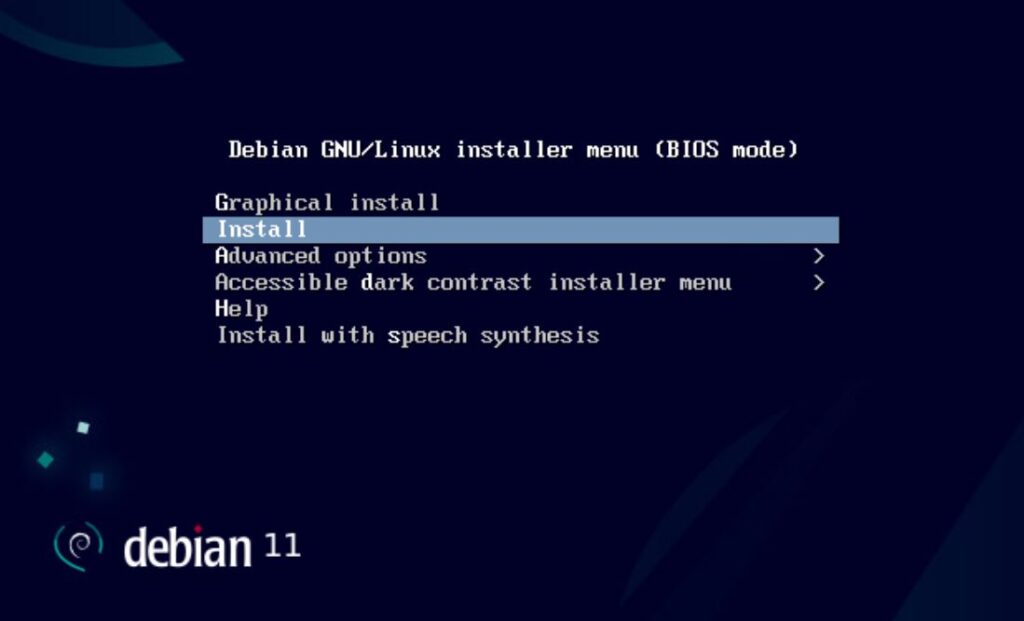
Set up your Keyboard, Language and Location
Begin by selecting the installer’s language and operating system. Select continue when you’ve found your desired language.
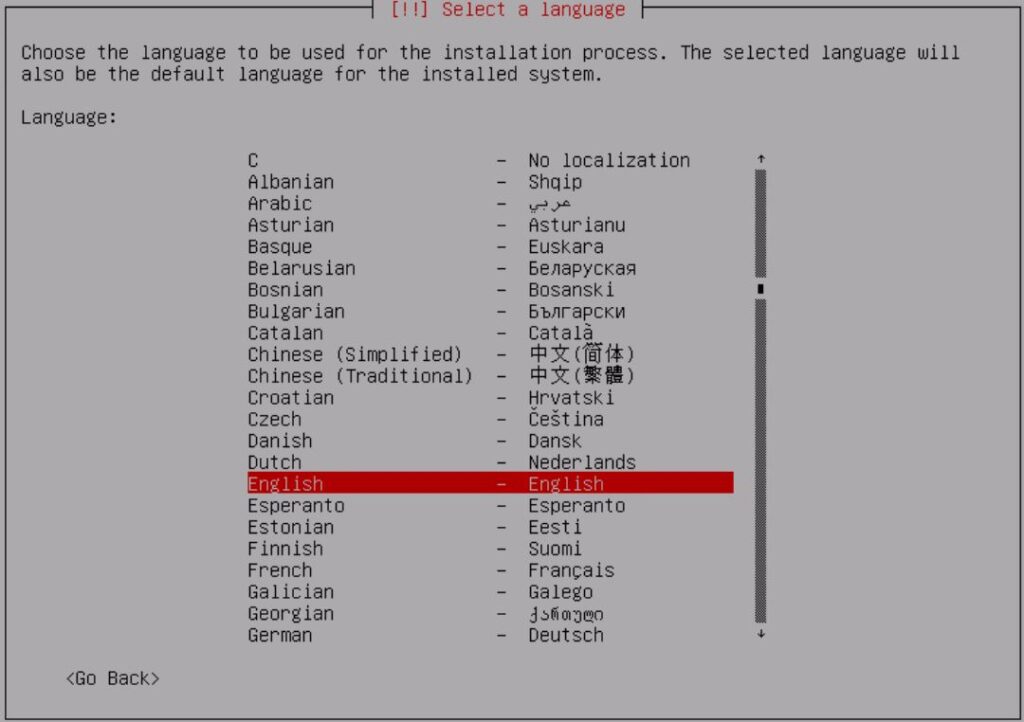
After that, give your location. Debian will set your time zone based on that information. If your country isn’t included, choose another for a more comprehensive list.
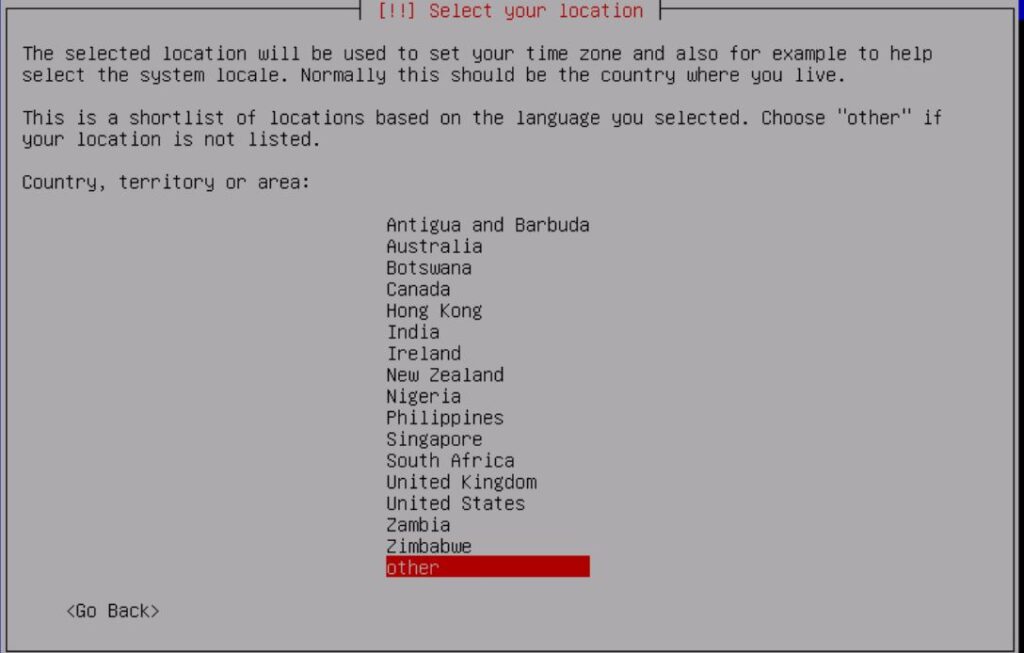
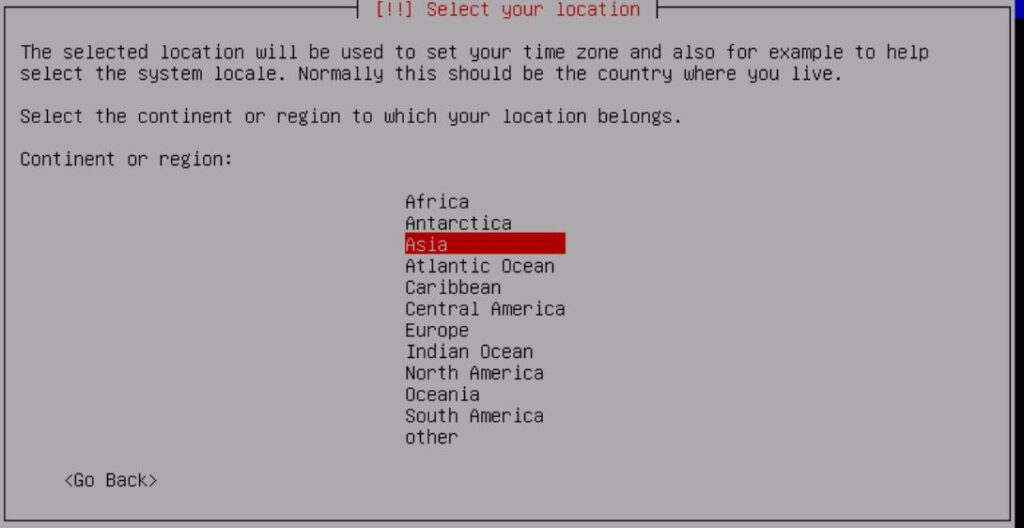
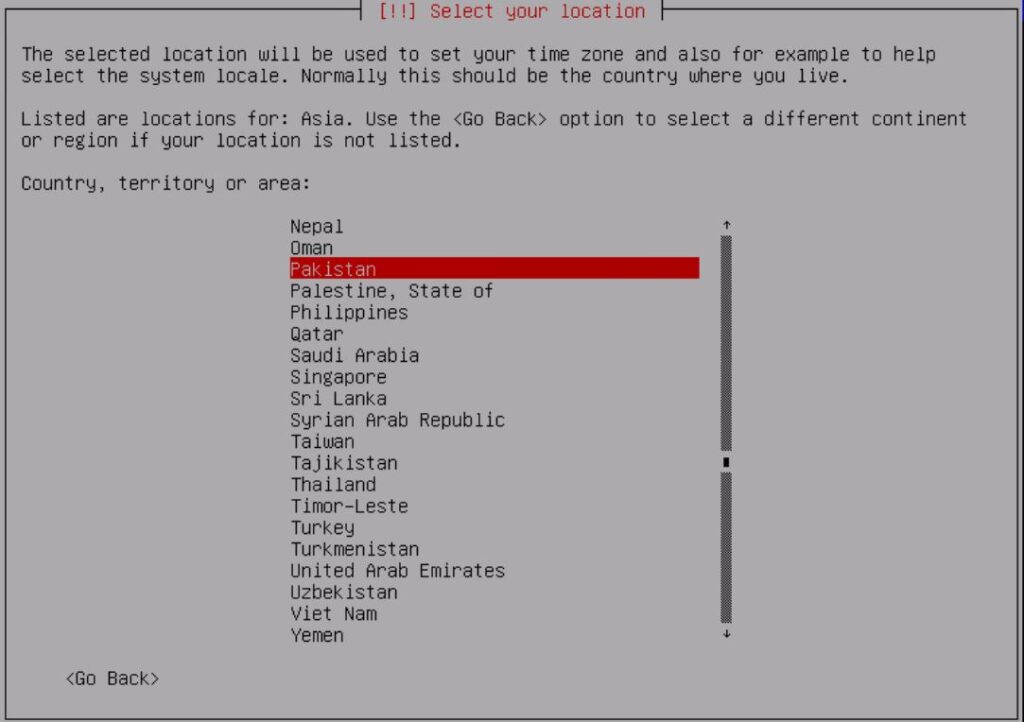
After there, choose the keyboard you’ll be using.
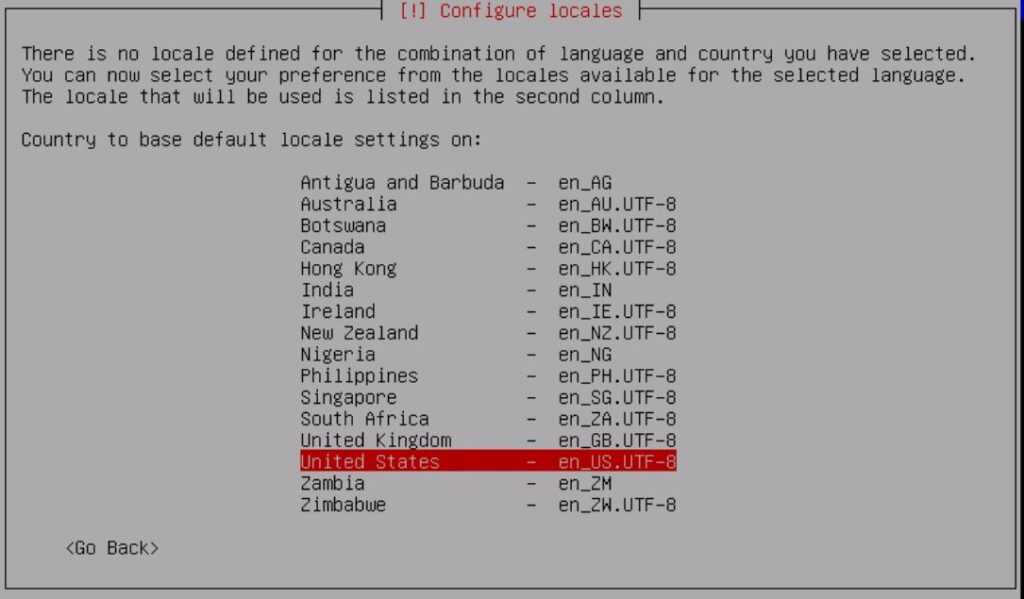

Network Configuration
Begin configuring the network by naming your operating system. It’s how you and other systems on the network will recognize it. We named the network to make the task easier.

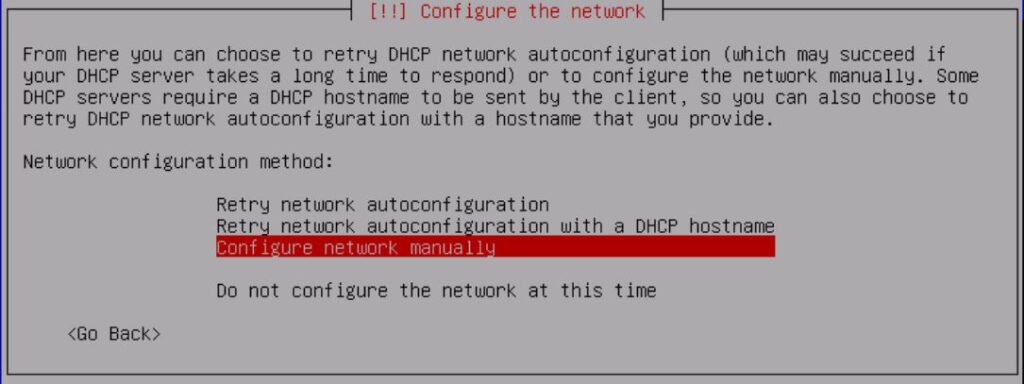
Setting up a domain name will also be part of the network configuration. It will mostly certainly be a term or phrase followed by.com,.net,.org, and so on. If you’re configuring the network for personal use at home, you can give it any name you like.





Users and Passwords
After that, you’ll need to create users and passwords. Create a root password first. Include letters, numbers, punctuation, and characters in both lower and upper case. The more complicated your password is, the less likely you are to experience future security breaches.


After that, make a user for non-administrative tasks. Click Continue after entering your entire name (or at least your first name).
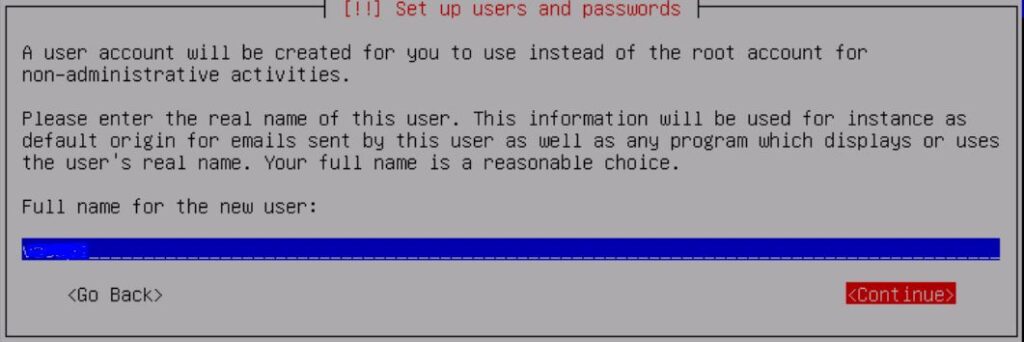

The user accounts, like the root account, require a strong password. Make a password for the new user and double-check it.


Disks for Partitioning
To partition discs, you must first pick whether you want the installer to do it for you or if you prefer to do it yourself. In general, we advise using the following method: Use the entire disc if you’re following the instructions.
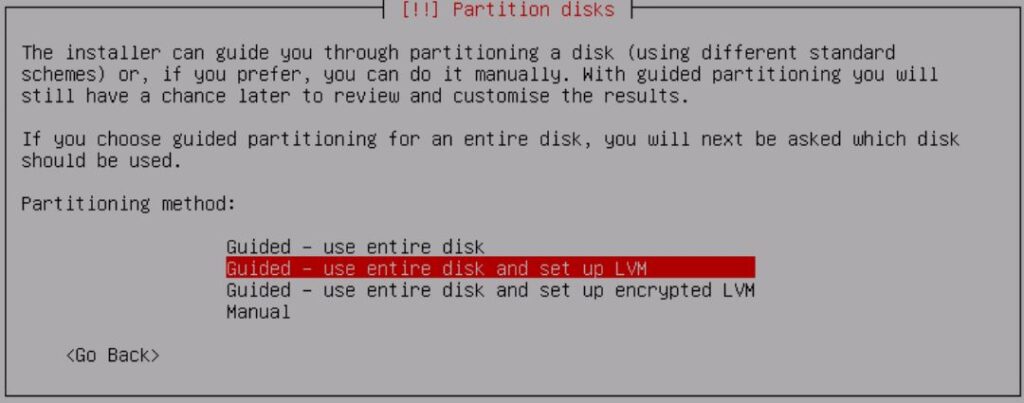

Choose the disc you’d like to partition. Be advised that the whole contents of the hard disc will be deleted.
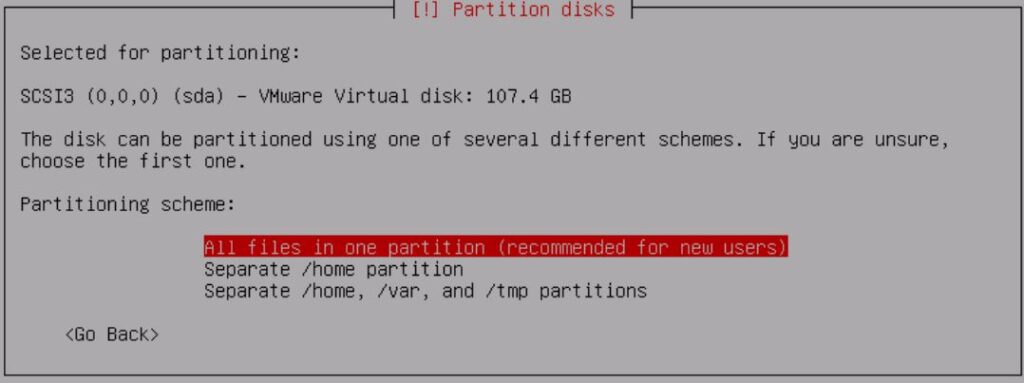
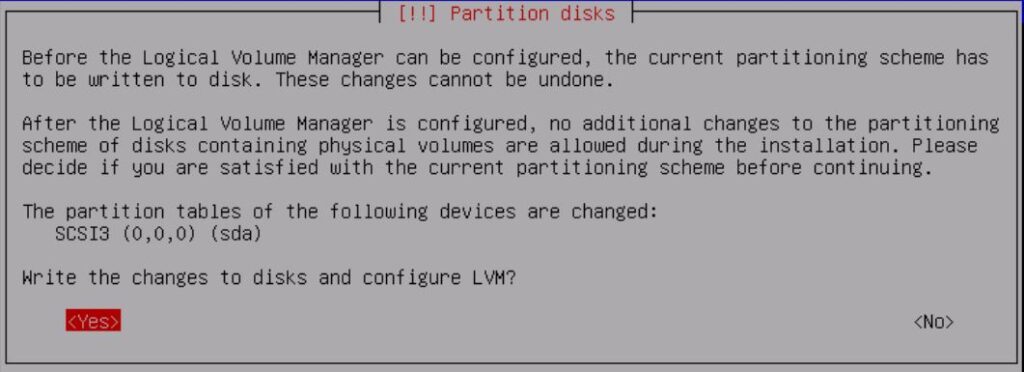
After that, partition the drive according to your preferences. It is advisable to stick with the default system of all files in one partition for new or inexperienced users.
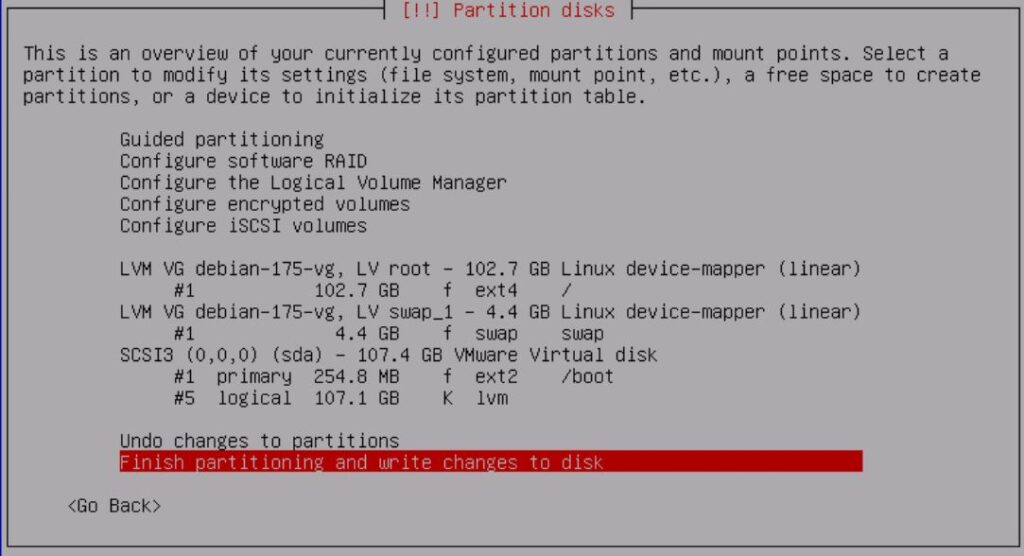
The installer will give you a quick summary of the disc setup. If everything is as you want it, check the settings and click Continue.
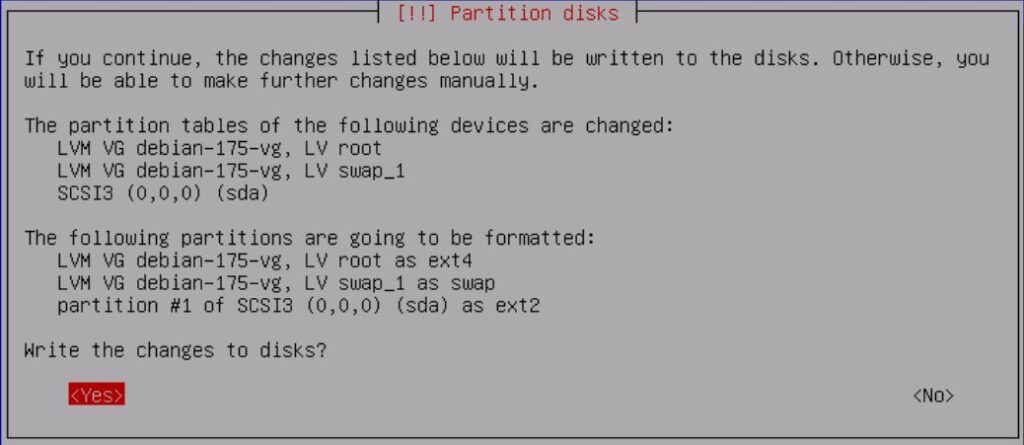
Select Yes to confirm the disc changes, then select Continue.

The installation process will begin.
Final Configuration
Your system must be connected to the internet in order to configure the package management. Select Yes and click Continue to use the network mirror if it is connected.
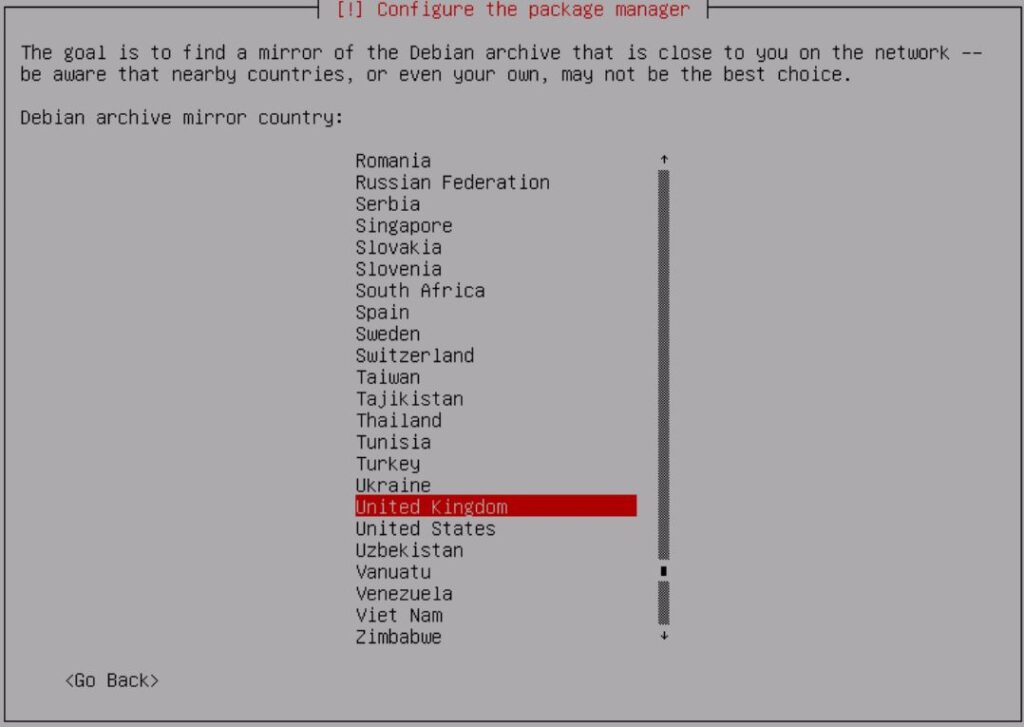
The installation will then ask you for a location and the URL for the Debian package repository.
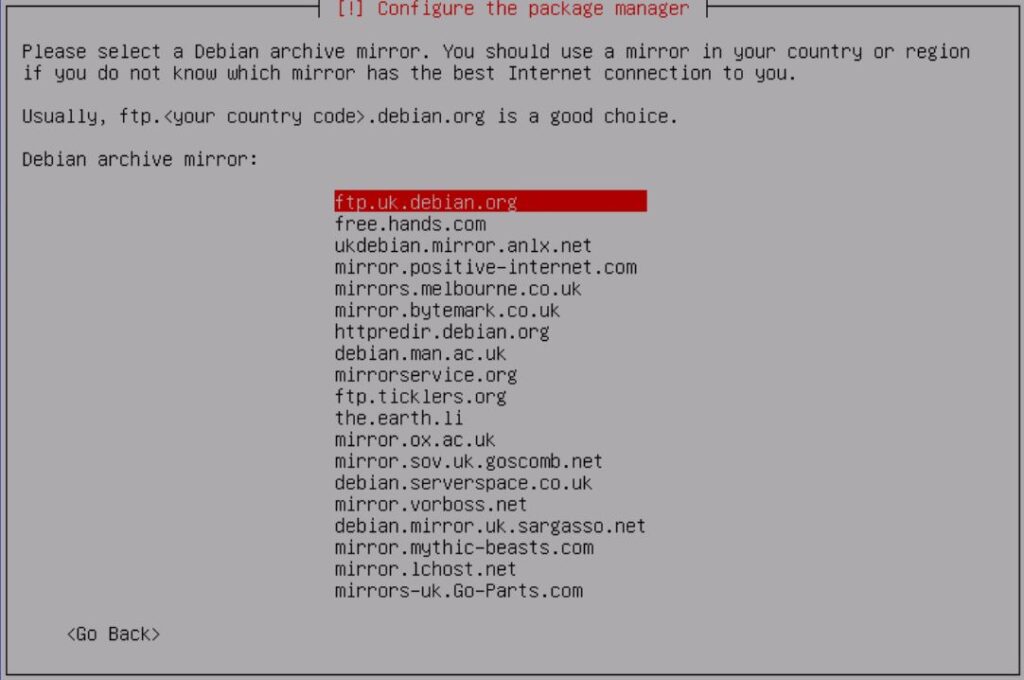
Choose whether or not you’d want to take part in a package consumption survey. If you choose Yes, automatic submission scripts will be run on your machine by distribution developers. The results of the poll will reveal the most commonly utilized packages. Choose No if you want to keep that information private.

Next, choose the applications you wish to have pre-installed when you turn on the computer. Choose GNOME if you prefer a graphical user interface. Installing regular system utilities and any other software you might need is also a smart idea. Click Continue once you’ve finished selecting all of the software.

If Debian is your primary operating system, you can safely install the GRUB boot loader on your hard disc as recommended.
The next box will ask you to select the device on which the boot loader should be installed. Unless you want to manually enter the device, choose /dev/sda.
You’ve completed the setup and installation of Debian 11. To reboot the system, select Continue.

Start Up Debian 11.2.0
Navigate to the Bios settings and choose the Debian Buster installation disc to boot the machine from.
As a result, the GNU GRUB bootloader will appear, and you can choose to start Debian GNU/Linux from there.
You will be prompted to log in using the user account you created. Use your login name and password.
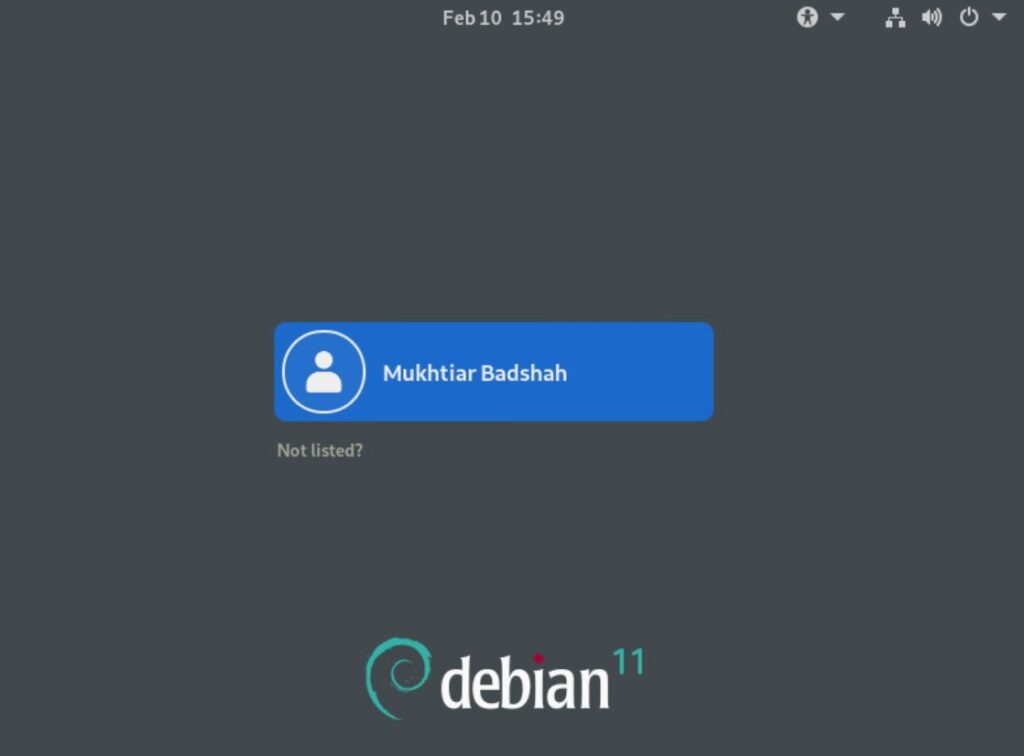
It’s finished! You should now be able to see the Debian 11.2.0. This indicates that Debian 11.2.0 has been successfully installed on your PC.
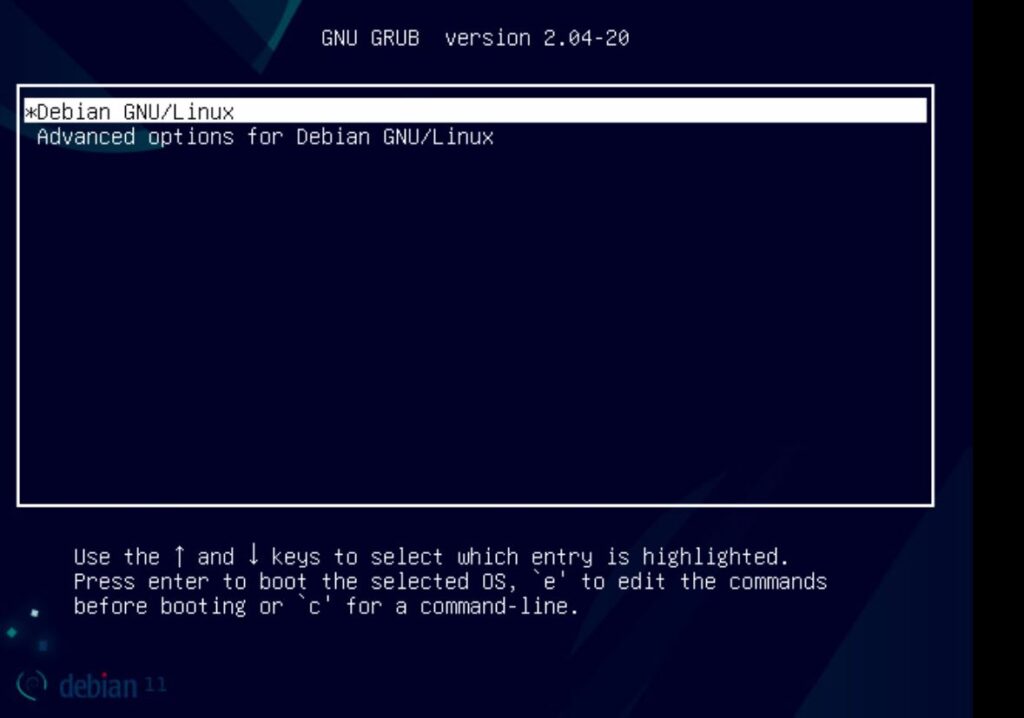
Conclusion
You have successfully installed Debian 11 on your system using this step-by-step tutorial. After that, you might want to check out our other Debian tips for installing applications and learning how to use some of the most common commands.














